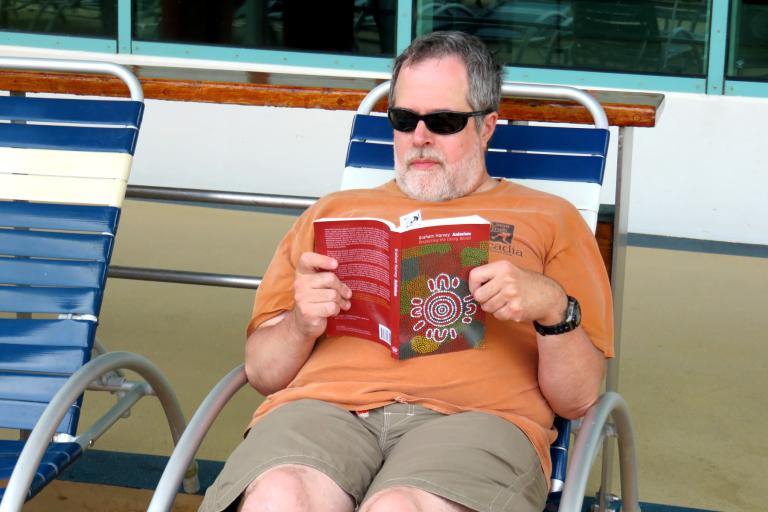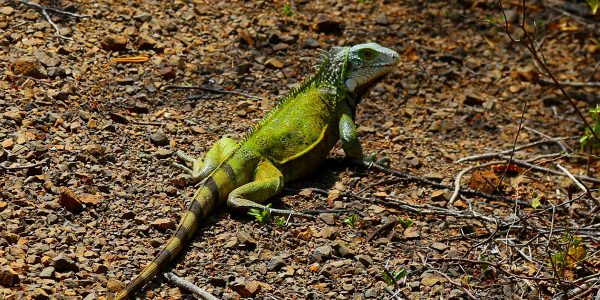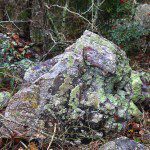Another topic that came up while I was on vacation was animism. I wrote Owning Land in an Animist World before I left and had it queued up to post while I was gone. While we can’t own land in the sense of having absolute control over it, owing it in the legal sense increases both the opportunity and the responsibility “to care for the land like the living, inspirited being it is.”
Herbalist and witch Sarah Anne Lawless wrote an excellent piece titled Everything You Need to Know About Animism. It’s almost 8000 words (about the same as six of my usual posts) of introductions, examples, and references.
Animism is the belief that everything has a spirit and a consciousness, a soul, from the tiniest microorganism on earth to the great planets in the heavens to the whole of the universe itself … Spirits of place (genus loci) are thought to be either the actual soul of the land or a soul who has come to reside in a hill, stream, or grove as its guardian and benefactor.
Some of what she presents would more properly be classified as elements of certain animist traditions rather than components of animism itself, but in general she does a good job of explaining the differences between animism, Paganism, and polytheism.
Animism is usually viewed as more primitive with polytheism being seen as more advanced (think Stone Age vs. the Roman Empire), but as many modern religious scholars have discovered there is more natural harmony and more earthly wisdom within animism than almost any world religion.
That’s not wrong, but animism is a key component of the polytheist religion I practice, not a competitor to it.
Also while on vacation, I read Animism: Respecting the Living World by Graham Harvey. I’m not going to do a book review – it’s been out since 2005 and there are several good reviews on Amazon. I will say it’s the most helpful book on animism I’ve come across. The introduction led me to assume it would be another academic analysis from a strictly non-theistic viewpoint, but that wasn’t the case. Harvey didn’t engage in much speculation as to the spiritual physics underlying animism. What he did was to explain the practices of contemporary animists with respect and without judgment, and in doing so illustrate what an animist worldview looks like.

One of the key elements of animism I completely ignored in my post on owning land was the concept of personhood. We cannot say for sure if everything has a spirit or is a spirt, but we can say that everything is not a thing but a person. Rabbits are persons. Rivers are persons. Rocks and trees are persons… though according to Harvey, the Ojibwe people of Canada consider some rocks to be persons and some not, depending on how they behave.
The point is that because they are persons and not things, we are obligated to treat them with dignity and respect, and not merely as inanimate objects to be used at our convenience.
Beyond this, though, I don’t want to spend a lot of time explaining animism. Other people – such as Sarah Lawless and Graham Harvey – have already done a better job of that than I can. Instead, I’d like to explore the implications of animism. If the animist worldview is correct – and I believe it is – what does that mean for how we live our lives?
Our relationship with food
A vegetarian friend used to have a bumper sticker that said “I don’t eat anything with a face.” Her point was that animals are too much like people to eat. I get that. I recently came across someone who talked about eating monkeys. Starvation scenarios notwithstanding, I don’t think I could eat a monkey – it really is too close a relative. But I have no problem eating the usual farm and game animals.
What happens, though, when you realize that not only are cows and chickens persons, so are wheat and corn and beans? We must eat other persons or we will die. This is true of every animal in existence – we are no exception. While plants live off sunlight, they also require water and the elements in the soil… which mostly come from the decaying bodies of recently living persons.

The Abrahamic religions draw a distinction between humans and all other species. Humans are Imago Dei – made in the image of God – while all other species are put here for our use. That’s not all that different from the military strategy of turning these people into “soldiers” and those people into “the enemy,” who can and must be killed with impunity. That strategy works (i.e. – it allows us to do what we must do without being paralyzed by guilt) but it doesn’t align with the reality of evolution, and it’s resulted in humans trashing the planet for our own short-term benefit.
Harvey points out that in many animist societies, it is the job of the shaman to ask permission to take other persons for food, and to insure that proper respect is shown to the animal or plant in the process. A few years ago I wrote a post called Sacramental Eating, where I said:
Every living thing we eat is a sacrifice. Its life is given – or taken – to sustain us. Can we acknowledge that sacrifice? Can we give thanks, not just to the Earth Mother but also to the plants and animals that keep us alive? Can we honor their sacrifice by supporting ethical agriculture that insures the continuity of the species that die to feed us?
Further, if I spend decades killing other persons so I can eat, it seems like the least I could do would be to allow other persons to eat my body when I don’t need it any more. Embalming and cremation seem rather self-centered…
Not all persons mean you well
I’m not talking about sharks and grizzly bears, who will eat you if you wander into their territories. They have no more ill will toward you than you have toward the cow that became your hamburger. Here I’m talking primarily about our fellow humans, from street criminals to corporate criminals, abusive parents and spouses, and other people with generally nasty demeanors and anti-social behaviors.
And while most non-human animals that will hurt you do so for understandable reasons, if you’ve been around animals for very long you know some of them are just plain mean. Cats, dogs, farm animals, wild animals – most behave in a rational manner. But some will hurt other animals just because they can.
If this is true for animal-persons, why should we expect it to be any different for spirit-persons – particularly when the stories of our ancestors warn us about them? We live in a Brothers Grimm world, not a Disney world.
So if you’re dealing with spirit-persons, be respectful. But also be awake and aware. Study and learn before you go wandering into unfamiliar territories populated with unknown persons.
Animism is a religious concept, not a religion
Like polytheism, animism is not a religion. It’s a foundational concept of many religions, one that both Nature-centered Pagans and Deity-centered Pagans would do well to consider. It does a good job of explaining the universe as we actually experience it. It stands in stark contrast to both the hierarchy of Abrahamic monotheism and to the lifelessness of materialism.
As animistic Pagans, how can we incorporate animist thinking into our theologies – our thoughts about the Gods and the nature of the Gods? How can we incorporate animism into our ideas about magic – how we go about creating change in accordance with our will?
Perhaps most importantly, how can we best relate to the rest of the universe as persons, even though we must eat to live and some of these persons are likely to harm us?
These are questions to consider as our Pagan and polytheist religions continue to grow and evolve.
















